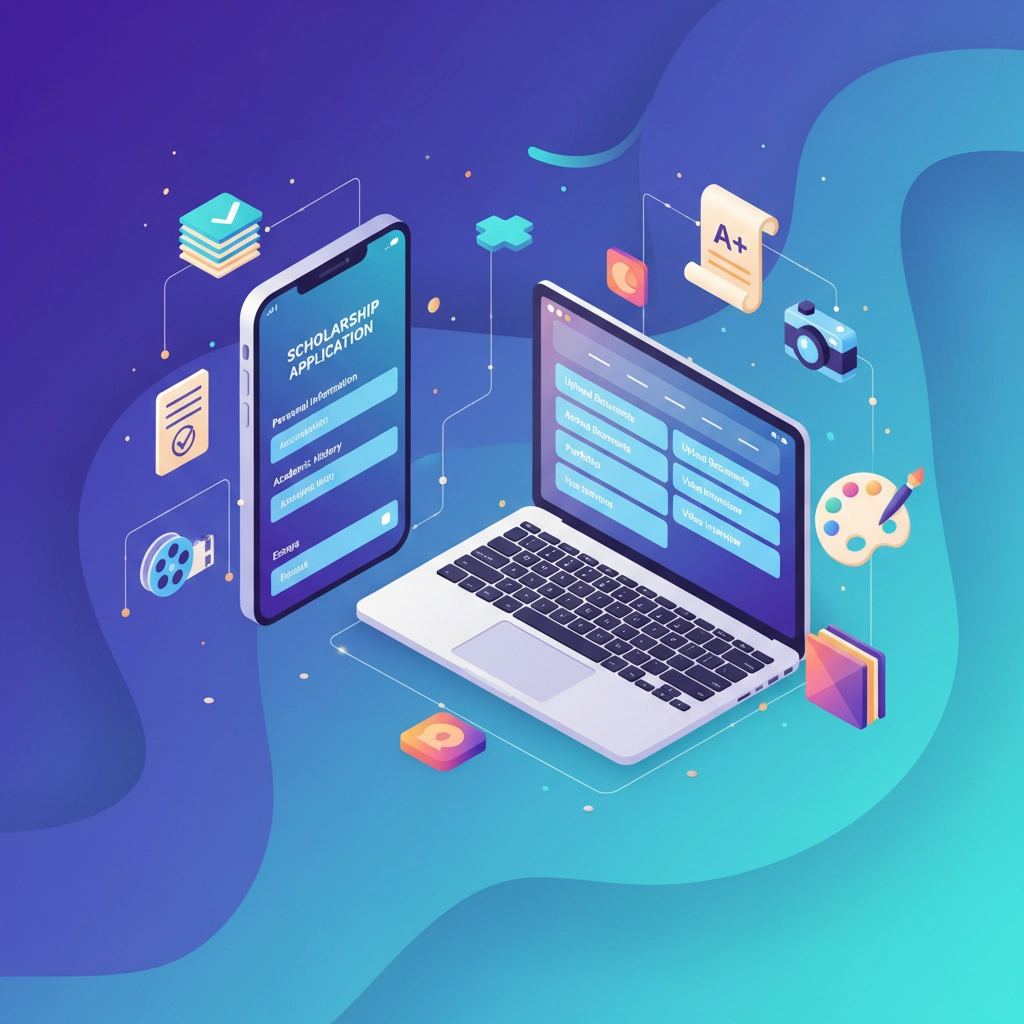Brand scholarship platforms represent a structured approach to educational funding that connects corporate entities with student athletes seeking financial assistance. The establishment of such platforms requires systematic planning, technical implementation, and ongoing management processes. Organizations implementing scholarship programs must address multiple operational components to ensure program effectiveness and participant satisfaction.
Foundation Elements for Brand Scholarship Platforms
The initial development phase of a brand scholarship platform requires the establishment of core organizational elements. Brand identity formation constitutes the primary step in this process. Organizations must define their positioning within the educational funding landscape and articulate their value proposition to potential applicants.
Brand development encompasses multiple strategic considerations. Organizations must determine their target demographic, establish eligibility criteria, and define program objectives. The brand identity should reflect organizational values while appealing to the intended recipient population. Clear messaging frameworks ensure consistent communication across all platform touchpoints.

Technical infrastructure requirements include platform architecture, data management systems, and user interface design. The platform must accommodate application submissions, document storage, and review processes. Security protocols protect sensitive applicant information while ensuring accessibility for authorized personnel.
Marketing and Promotional Strategies
Scholarship platform visibility depends on comprehensive marketing approaches that utilize multiple communication channels. Digital marketing strategies form the foundation of modern scholarship promotion efforts. Social media platforms provide direct access to target demographics, particularly student populations who maintain active online presence.
Content marketing initiatives support brand awareness through educational materials and program information. Blog posts, infographics, and video content explain application processes, eligibility requirements, and program benefits. Search engine optimization ensures content visibility when potential applicants research funding opportunities.
Email marketing campaigns deliver targeted messages to specific audience segments. Educational institutions, guidance counselors, and student organizations represent key distribution points for scholarship information. Direct outreach to high schools and colleges expands program reach through established communication networks.
Partnership development with educational institutions creates additional promotional opportunities. School districts, college financial aid offices, and academic departments can incorporate scholarship information into their student communication systems. These partnerships provide credibility and access to qualified candidate pools.
Application Platform Development
The application management system serves as the central hub for candidate interactions with the scholarship program. Platform design must prioritize user experience while maintaining administrative functionality. Simplified application processes increase participation rates and improve candidate satisfaction.
Application forms should collect essential information without creating unnecessary barriers. Basic demographic data, academic records, and program-specific requirements comprise the standard information collection framework. Digital submission capabilities accommodate modern user preferences while reducing administrative processing time.

Document management features enable applicants to submit supporting materials including transcripts, essays, and portfolio items. Video submissions and multimedia content provide additional evaluation criteria for programs focused on creative or technical skills. Centralized storage systems organize materials for efficient reviewer access.
Automated communication features keep applicants informed throughout the review process. Status updates, deadline reminders, and result notifications maintain engagement while reducing administrative workload. Integration with calendar systems helps applicants track important dates and requirements.
Performance Metrics and Analytics
Scholarship program effectiveness requires continuous monitoring through established metrics and reporting systems. Application volume tracking provides insights into program reach and marketing effectiveness. Trend analysis identifies seasonal patterns and helps optimize promotional timing.
Referral source analysis determines which marketing channels generate the highest quality applications. Web analytics, social media metrics, and partner referral data inform budget allocation decisions. Conversion rates from initial interest to completed applications measure funnel effectiveness.
Recipient outcome tracking demonstrates program impact over time. Academic performance monitoring, career progression data, and alumni success stories provide evidence of program value. These metrics support program justification and future funding requests.
Cost-per-application calculations help optimize marketing spend and identify the most efficient promotional channels. Return on investment analysis compares program costs to achieved outcomes and societal benefits.
Administrative Management Practices
Effective scholarship administration requires structured processes for application review, recipient selection, and ongoing program management. Review committee establishment ensures fair evaluation through diverse perspectives and expertise representation. Committee training standardizes evaluation criteria and reduces bias in selection processes.
Data security protocols protect applicant information throughout the program lifecycle. Secure access controls limit information availability to authorized personnel only. Regular security audits and updates maintain protection standards as technology evolves.

Communication workflows establish clear procedures for applicant interactions, committee deliberations, and decision notifications. Template development ensures consistent messaging while reducing administrative time requirements. Documentation standards create audit trails and support program transparency.
Financial management systems track scholarship disbursements, budget allocations, and expense reporting. Integration with accounting software streamlines financial reporting and compliance requirements. Regular financial reviews ensure program sustainability and proper fund utilization.
Technology Integration and Automation
Modern scholarship platforms benefit from automation capabilities that reduce manual processing requirements. Automated eligibility screening filters applications based on predetermined criteria before human review. This process improves efficiency while ensuring consistent application of program requirements.
Integration capabilities connect scholarship platforms with existing organizational systems. Customer relationship management integration maintains comprehensive applicant records and communication history. Financial system connections streamline payment processing and budget tracking.
Mobile optimization ensures platform accessibility across device types. Responsive design accommodates various screen sizes and input methods. Mobile applications can provide additional functionality and convenience for frequent platform users.
Reporting automation generates regular performance summaries and administrative reports. Dashboard interfaces provide real-time program status updates and key metric visualization. Automated alerts notify administrators of important events or threshold breaches.
Stakeholder Engagement Strategies
Successful scholarship platforms maintain engagement with multiple stakeholder groups including applicants, recipients, alumni, and partner organizations. Regular communication maintains relationships and supports program sustainability through ongoing participation and referrals.
Alumni network development creates ongoing community connections that benefit current participants and support program promotion. Success story collection provides marketing materials and demonstrates program impact to potential sponsors and applicants.
Partner relationship management ensures continued collaboration with educational institutions and referring organizations. Regular updates, feedback collection, and recognition programs maintain positive relationships that support program growth.
Sponsor engagement activities demonstrate program value and encourage continued funding support. Performance reporting, impact measurement, and recognition opportunities maintain sponsor satisfaction and support program expansion efforts.
The implementation of comprehensive brand scholarship platforms requires attention to multiple operational components and ongoing management commitment. Organizations following structured development approaches and best practices create sustainable programs that effectively serve their target populations while achieving organizational objectives.
